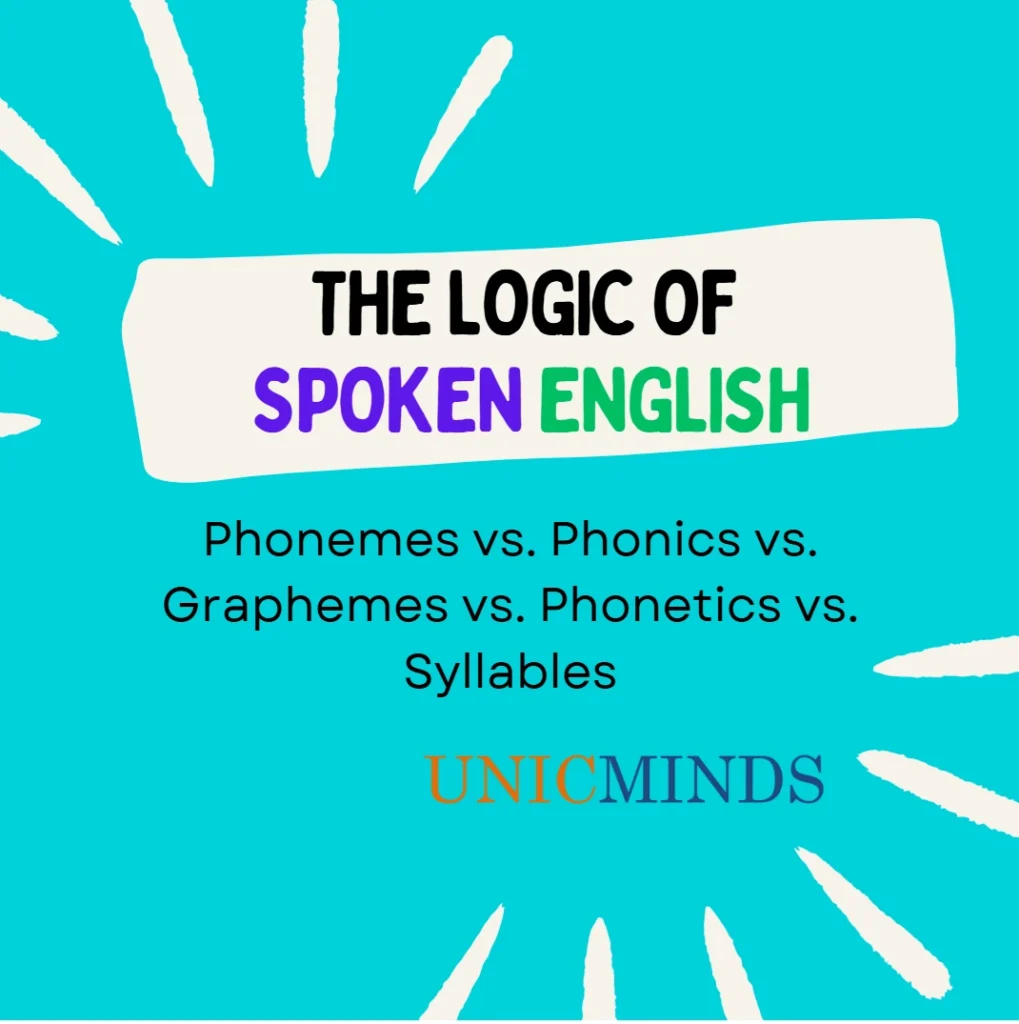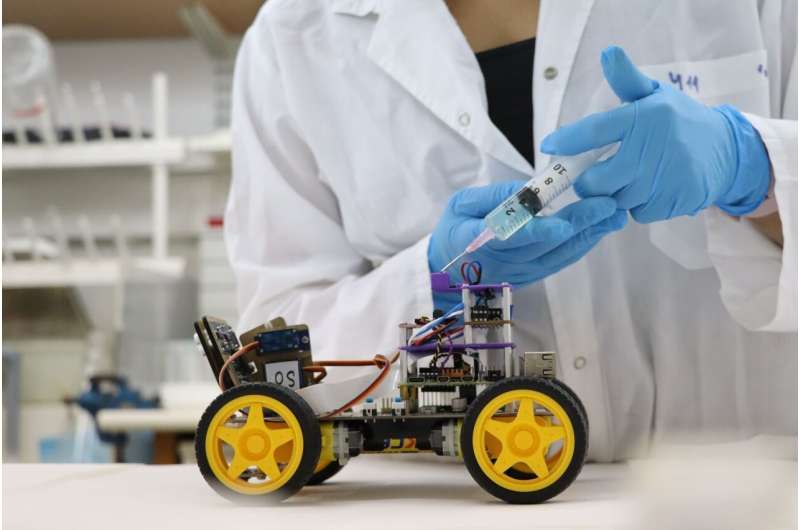As we saw in the previous posts, phonemes are the smallest units of sounds. They’re the sounds in English. And, how the symbols you use to denote them in writing are called graphemes. Then, what are Phonics? Phonics is the system of teaching reading and spelling by connecting the phonemes (sounds) with the graphemes (symbols).
Graphemes are in various types – single letter, digraphs, trigraphs, etc. Graphemes are essentially the written form of the smallest unit of sound, the phoneme.
Single Letter Graphemes:
Many graphemes are single letters, like ‘a’, ‘b’, ‘c’, etc.
Multi-letter Graphemes:
Some graphemes are composed of two or more letters, such as “sh”, “ch”, “ai”, “oa”, and “igh”.
Digraphs and Trigraphs:
A digraph is a grapheme with two letters (e.g., “sh” in “ship”), and a trigraph has three letters (e.g., “igh” in “light”).
Variations:
In English, one phoneme can be represented by different graphemes (e.g., the /k/ sound can be spelled “c”, “k”, or “ck”), and one grapheme can represent different phonemes in different words (e.g., the “ea” grapheme in “bread”, “great”, and “pear”).
Phonics helps learners decode (read) and encode (spell) words by understanding the relationships between sounds and letters. Phonics builds upon phonemic awareness, as it requires the ability to hear and manipulate individual sounds (phonemes).
Phonemic awareness is the ability to recognize phonemes in a word by hearing it or seeing it. Phonic awareness is the ability to translate sound into spoken words. Converting phonemes into graphemes is not specifically a part of phonemic or phonic awareness; it is a bit more advanced science of English that is built as phonemic and phonic awareness is built with various activities.
Phonemic awareness is fundamental for correct pronunciation in English. For example, the words ‘cat’ and ‘sat’ are separated by only the phonemes /c/ and /s/. Phonemes are written between slashes // or curly brackets () in some countries. Phonemic awareness is critical for many different things when it comes to reading—alphabetic principle, decoding, spelling, and even orthographic mapping.
Activities of Phonemic Awareness
- Phoneme Isolation: Identifying individual sounds in words.
- “What is the first sound in the word ‘cat’?” (/k/).
- “What is the last sound in the word ‘sit’?” (/t/).
- Phoneme Blending: Listening to a sequence of separately spoken sounds and combining them to form a word.
- “What word do these sounds make: /s/ /a/ /t/?” (sat).
- Phoneme Segmentation: Breaking a word into its individual sounds.
- “How many sounds are in the word ‘ship’?” (/sh/ /i/ /p/—3 sounds).
- “Say the word ‘dog’ one sound at a time.” ( /d/ /o/ /g/).
- Phoneme Deletion: Recognizing what remains when a phoneme is removed from a word.
- “What is ‘smile’ without the /s/?” (mile).
- “Say ‘cart’ without the /k/.” (art).
- Phoneme Addition: Making a new word by adding a phoneme to an existing word.
- “What word do you get if you add /s/ to the beginning of ‘top’?” (stop).
- Phoneme Substitution: Changing one phoneme in a word to make a new word.
- “Change the /sh/ in ‘shop’ to /m/. What’s the new word?” (mop).
- “Change the /g/ in ‘tug’ to /b/. What’s the new word?” (tub).
Then, what are Phonetics?
Phonetics is the field of study of the physical aspects of the sound. Like where and how the sound physically comes from or being perceived from – its acoustic properties, like the study of the vocal organs, the tongue, lips, and other parts that produce the sound.
Syllables vs. Phonemes
Phonemes are single units of sound and should not be confused with syllables, they are different things. Syllables are chunks within a word or the rhythm of a word. For example, in hipp-o-pot-um-us there are 5 syllables but 11 phonemes.
Building a solid foundation in English literacy requires discerning various aspects of the language and to align the learning lessons in a sequential and organized manner. And, that is what we do at UnicMinds English Courses.
Hope this is useful to gain basic understanding of phonemic awareness. Thank you for reading this post.
You may like to read: English Pronunciation – Short Vowel Sounds vs. Long Vowel Sounds, Kid Friendly Museums in Canberra, & Personalized Online Classes for Kids




